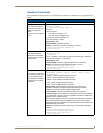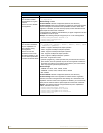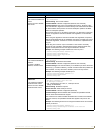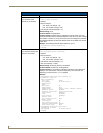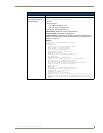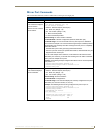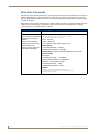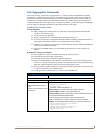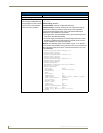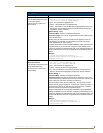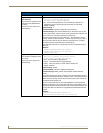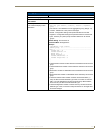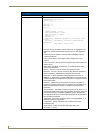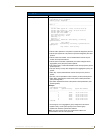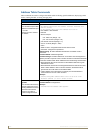
CLI (Command Line Interface)
239
NXA-ENET24 - Software Management Guide
Link Aggregation Commands
Ports can be statically grouped into an aggregate link (i.e., trunk) to increase the bandwidth of a network
connection or to ensure fault recovery. Or you can use the Link Aggregation Control Protocol (LACP) to
automatically negotiate a trunk link between this switch and another network device. For static trunks, the
switches have to comply with the Cisco EtherChannel standard. For dynamic trunks, the switches have to
comply with LACP. This switch supports up to six trunks. For example, a trunk consisting of two 1000 Mbps
ports can support an aggregate bandwidth of 4 Gbps when operating at full duplex.
Guidelines for Creating Trunks
General Guidelines:
Finish configuring port trunks before you connect the corresponding network cables between
switches to avoid creating a loop.
A trunk can have up to eight ports.
The ports at both ends of a connection must be configured as trunk ports.
All ports in a trunk must be configured in an identical manner, including communication mode (i.e.,
speed, duplex mode and flow control), VLAN assignments, and CoS settings.
All the ports in a trunk have to be treated as a whole when moved from/to, added or deleted from a
VLAN via the specified port-channel.
STP, VLAN, and IGMP settings can only be made for the entire trunk via the specified port-
channel.
Dynamically Creating a Port Channel:
Ports assigned to a common port channel must meet the following criteria:
Ports must have the same LACP system priority.
Ports must have the same port admin key (Ethernet Interface).
If the port channel admin key (lacp admin key - Port Channel) is not set when a channel group is
formed (i.e., it has the null value of 0), this key is set to the same value as the port admin key (lacp
admin key - Ethernet Interface) used by the interfaces that joined the group.
However, if the port channel admin key is set, then the port admin key must be set to the same value
for a port to be allowed to join a channel group.
If a link goes down, LACP port priority is used to select the backup link.
Link Aggregation Commands
Command Function
Manual Configuration Commands
interface port-channel See page 231.
channel-group
This command adds a port to a
trunk.
Use the no form to remove a port
from a trunk.
Syntax:
channel-group channel-id
no channel-group
• channel-id - Trunk index (Range: 1-4)
Default Setting: The current port will be added to this trunk.
Command Mode: Interface Configuration (Ethernet)
Command Usage: When configuring static trunks, the switches must com-
ply with the Cisco EtherChannel standard.
• Use no channel-group to remove a port group from a trunk.
• Use no interfaces port-channel to remove a trunk from the switch.
Example: The following example creates trunk 1 and then adds port 11:
Console(config)#interface port-channel 1
Console(config-if)#exit
Console(config)#interface ethernet 1/11
Console(config-if)#channel-group 1
Console(config-if)#



